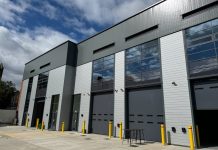
The Midlands Engine will thrive through ongoing investment in the region’s knowledge economy, although it could benefit from additional funding in the science sector according to a report from leading real estate adviser, Bilfinger GVA.
The report, The Midlands Engine and the knowledge economy is the first in a series looking at the role of the knowledge economy in the regions. It explores both existing and target sectors, key infrastructure and support networks that will enable growth and the property opportunities to support them.
One of the larger regional powerhouses, the Midlands Engine incorporates 77 local authorities formed from the West and East Midlands, the East of England, South East, Yorkshire and Humber regions, with the area boundary defined by its 11 constituent Local Enterprise Partnerships (LEPs). It provides 24% of the UK’s economic output and has an estimated workforce of 5.36 million, a figure that is expected to rise by over 250,000 over the next decade.
A key component in the government’s plans to boost regional growth and rebalance the UK economy, the knowledge economy will improve productivity and create a sustainable level of economic growth through a focus on three key areas: advanced manufacturing; technology, media and telecoms (TMT); and sciences.
Carl Potter, Senior Director and National Head of Offices, Bilfinger GVA, said: “The three key sectors within the defined Midlands Engine area play significantly to the strengths of the regions’ existing growth areas.
“Some 27 of the 33 key projects outlined in the UK Trade and Investment Pitch Book published earlier this year have a focus on the knowledge economy, 14 of which involve the expansion or development of a science park or innovation centre, and nine are in established Enterprise Zones. This is in addition to the schemes that each LEP has identified, bringing the figure up to 80 potential developments that can accommodate knowledge economy-based occupiers.
“The Midlands Engine has a tremendous wealth of knowledge economy infrastructure already in place with 25 universities, 25 science parks, two science cities and over 66,000 students. To ensure success we need to nurture and grow the existing relationship between the public and private sectors, bringing together employers, universities, centres for research and development and pioneers and innovators within these identified growth sectors.”
In advanced manufacturing, the Midlands Engine accounts for 37.9% of national output and has outpaced both the regional and national averages since 2009, with more than three quarters of local authorities within the Midlands Engine having a concentration of advanced manufacturing employment higher than the national average.
The area supports a broad range of manufacturing types including electronic, computer and optical products, pharmaceutical products, motor vehicles and communication equipment.
Similarly, there is a strong concentration of TMT sector businesses within the Midlands Engine area, with 45% of local authorities demonstrating a higher than average concentration of employment in the broad range of specialism covered by this sector.
This includes software development, information services and computer programming as well as telecoms providers with AT&T based in Redditch.
The largest potential for growth comes from the science sector, with only 5% of the local authorities currently having a concentration of science employment above the national average.
With health, agricultural technology, life sciences, low carbon and environmental research all identified as growth sectors in all but one LEP, there is significant scope for further improvements in the amount of science activity within the region.
Carl Potter continued: “One of the key outcomes of this research is how much potential there is to support the science sector and there are several key development opportunities, including the Boots Campus in Nottingham and the Life Sciences Central Hub in Birmingham including Longbridge, Pebble Mill and the former Battery Park site.
“We must also ensure that we are able to provide the smaller and more varied and flexible ‘cluster’-style accommodation favoured by the TMT sector and, rather than imitating the successes that have been seen in this sector in London and the north west, the Midlands needs to build on its existing strengths to ensure that it is creating the best possible opportunities.”
Of all of the regional powerhouses, the Midlands Engine has been the most productive in terms of jobs created with more than 7,000 created across the six Enterprise Zones and has recorded the highest investment per Enterprise Zone of any powerhouse region, with £171.7 million.




















